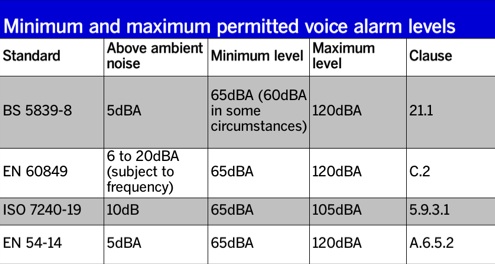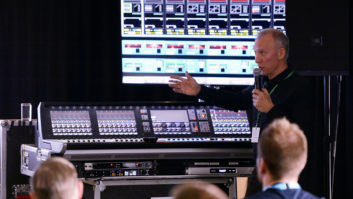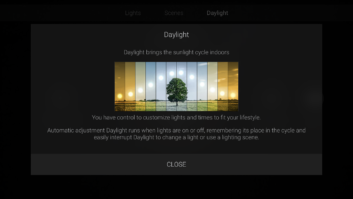
In this exclusive, edited extract from The Installation Europe Guide to Voice Alarm Systems, Roland Hemming and Richard Northwood outline the four principles underlying the design and operation of voice alarm systems
Principle 1: Intelligibility and coverage
A system should be designed such that for an intelligible input there is an intelligible output.
The coverage of a building must include all areas where people might need to escape to safety, including the designated escape routes.
The risk of a person not hearing an intelligible message in an emergency must be assessed and compared to the likelihood of that space being occupied.
For areas that are small, rarely occupied, or both, such as store rooms, electrical plant rooms and roof-top plant areas, the assessment needs to be reasoned between pragmatism and percentage risk in a consistent manner.
The basic sound pressure level requirement is 65dB or 5dB above ambient noise and an objective intelligibility quotient or STI of 0.5. Dead spots in the audio coverage are permitted subject to the use of the building. Ninety or 95% coverage is a common requirement.
As well as your VA system providing sufficient level, it must not be too loud. A very loud sound can be just as unintelligible as one that is too quiet, as well as possibly causing panic.
There is a maximum level for sounders and the ‘attention drawing signal’ of VA at any point where people will hear it. There is technically no limit for voice messages. However, it has recently been suggested by some acoustic experts that more level does not necessarily increase intelligibility at levels above 100dBA because the brain shuts
it out.
It is also important to note that a single tone, such as a sine wave, is far more painful than a voice message at the same level.
Principle 2: Redundancy and diversity
It is important not to confuse diversity and redundancy. Diversity is the practice of dividing one large element into many smaller elements; redundancy is having a duplicate element in case the primary fails.
All single points of failure must be minimised and preferably removed. The more diversity designed into a system, the more likely it is that a larger part of the system will operate when required, and to a higher standard.
Where redundant equipment is proposed, care should be taken to avoid unnecessary complication, which might lead to unreliability or difficulty of maintenance.
Note that a single point of failure for a large part of the system can be mistakenly created; only a diligent risk assessment will show this up.
You may have ensured that only a small proportion of the coverage will be affected if the fuse in a single amplifier chassis (single or multiple channel) ruptures, and that due to diversity, this is an acceptably small risk. You may have ensured that the rupture of a fuse in a network switch, or DSP or some other part of the kit in that location also provides an acceptably small risk.
However, if you forget that the whole location is supported by a UPS whose output is spurred and the output protected by a single MCB, the lack of power will take out a major proportion of the system and thus be unacceptable as a risk.
Principle 3: Integrity monitoring
A system should be monitored so as to prove that for an acoustic input there can be an acoustic output when required. This monitoring must be automatic except for the loudspeaker itself, which must be manually checked by testing the system on a regular basis. The monitoring must always be active.
When verifying the integrity of a voice alarm system, the ability to monitor that the loudspeakers are still connected is the most difficult. This used to be done by using 3-core loudspeaker cable and sending a 20kHz tone along the loudspeaker line to an end-of-line unit, situated after the last loudspeaker, which then uses the third core to signal back to a monitoring unit.
Another method is to send DC voltage along the loudspeaker cables: this DC voltage is measured for any changes by using an end of line monitor at the end of the circuit. A blocking capacitor is required across the input of each loudspeaker to remove the DC.
In most cases, it is possible to split or spur circuits, perhaps up to 10 times, but there is often a maximum limit on the number of spurs, or the number of end of line monitors, in order for the monitoring to function correctly.
These days many amplifiers have built-in loudspeaker impedance monitoring which can be reported back to the fault monitoring system. This process works by specifying a defined impedance window. If the impedance deviates significantly then a fault will be recorded.
The ability to detect a single loudspeaker failure is increasingly diminished by having more and more loudspeakers on the same circuit.
Faults have to be reported within a defined period of time, meaning that it is acceptable to poll around from circuit to circuit as long as each circuit is polled within 100 seconds.
Faults in a system can be categorised according to their severity, to provide the user or engineer with information that is easier to process. This allows decisions to be made as to what needs to be dealt with now and what can be safely delayed until a more opportune moment. Fault logging also allows a system profile to be created so remedial action can be taken.
A relatively standard approach is to indicate a ‘non-critical’ fault as one which affects less than 50% of a given zone and a ‘critical’ fault as one which affects 50% or greater of a zone.
Principle 4: Ease of use
A system will not fulfil its role if a user – often unskilled, such as a security guard – who is unfamiliar with the system cannot operate it easily and intuitively. Nor will it fulfil its role if materials or equipment are chosen that do not address all the risks, not just those of fire but also vandalism, environmental factors, accidental damage and so on.
To simplify the operation of a VA system, touch screens or mimic panels are often used because they can provide feedback to the user and can display the layout of the VA system in a way that is relevant to the building.
IE reader offer
The Installation Europe Guide to Voice Alarm Systems is written by expert consultants Roland Hemming and Richard Northwood.
It is available as a printed copy or as a PDF download. To order, go to www.avitas-global.com.
Installation Europe readers can obtain an exclusive 20% discount on the price of either version by using the code
IE2010VA at the checkout.







